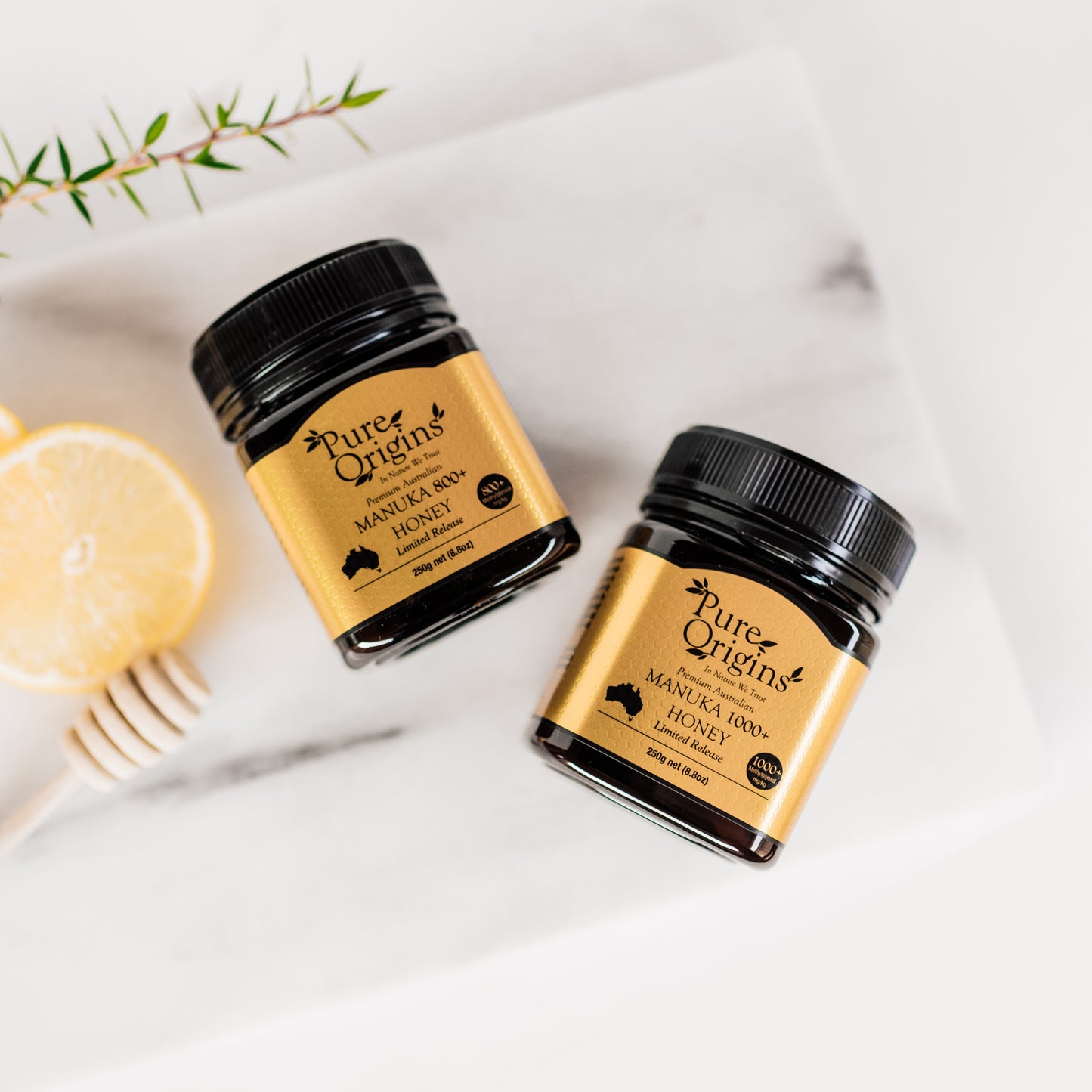
The Manuka Plant
Manuka honey is produced from the nectar of the Leptospermum Scoparium plant, to which the bees pollinate.
Of the 87 Leptospermum species of plants that are known to exist in the world, 84 are found in Australia, including the Leptospermum Scoparium (Manuka) species.
Leptospermum scoparium, often known as tea tree, broom tea tree, myrtle New Zealand tea tree, or simply manuka or mānuka, is a type of flowering plant belonging to the Myrtaceae family that is indigenous to south-east Australia (NSW, TAS, VIC) and New Zealand (including the Chatham Islands).
The Science of Manuka
Universities in Australia have emerged as leading Manuka honey research hubs during the past decade. Modern studies on the nutritional health advantages of Australian honey are actively being conducted at the I3 institute at UTS in Sydney, Australia, by a team led by Professor Liz Harry. They studied more than 80 honey samples from NSW and Queensland flowering manuka (Leptospermum) trees and found the nectar-derived chemical that gives NZ manuka honey its unique antibacterial properties is present in Australian varieties.
The ground-breaking research also shows the antibacterial properties of honey remain unchanged over several years when stored appropriately.
Quantitative measurements of the species of Manuka that produce DHA and MGO as well as their geographical dispersion across Australia are being made as part of research at the University of the Sunshine Coast on the diversity and quantity of Leptospermum plants in this area.
The University of Western Australia is also researching the genetics of manuka for more reliable production and genetic profiling to guarantee that the worldwide protection of the identity of our distinctive and indigenous Australian species. You may read more about the study at the Oz Honey Project
Studies on the Power of Manuka
Since honey has been used medicinally by humans for thousands of years, scientists are now able to explain why honey has such potent therapeutic qualities.
Dr. Peter Molan conducted the initial study on Manuka honey at the University of Waikato in New Zealand's Honey Research Institute and started looking into the manuka honeys antibacterial qualities.
According to his studies, manuka honey possesses a sizable amount of non-peroxide antibacterial action. He then developed a grading system for manuka honey quality based on the amount of methylglyoxal in the honey, known as the ""Molan Gold Standard."
The late Dr. Molan's discoveries sparked a great deal of interest in the potential uses of Manuka honey for wound dressing, pressure dressing replacement and treatment of complicated illnesses including diabetic leg ulcers. Scar formation was minimised, healing time was accelerated, and patient comfort increased.
Manuka honey has been shown in several scientific tests to fight superbugs and speed up the healing of wounds. The early scientific studies on Manuka honey generated a great deal of interest and prompted more study, which improved our comprehension of the health advantages of Manuka honey.
Grade of Manuka
Methylglyoxal (MGO) is the active antibacterial component of honey and was studied by German researchers at the University of Dresden. NPA is the non-peroxide activity, which is the additional antibacterial activity found in Manuka Honey. As a result of the German study, MGO has taken the position of NPA as the crucial measure of a Manuka honey's strength. Unlike NPA and the outdated agar plate assay technique, which is over a century old and prone to mistake, MGO is extremely accurate and directly measurable by HPLC (High Performance Liquid Chromatography).
It is relatively simple to distinguish between a false product and pure, authentic Manuka honey thanks to research conducted in Japan that established the distinct chemical markers contained in Leptospermum honey that are not present in conventional honey. These distinct Manuka markers were detected in large quantities when scientists examined Australian Manuka honey for them.
This guarantees that the Manuka honey you purchase from Australia may be assured to be a pure, natural, and genuine product.
Every batch of Pure Origins Manuka honey is tested by an independent, approved laboratory to ensure it meets minimum standards of naturally occurring methylglyoxal (MGO), and dihydroxyacetone (DHA). Our Australian Manuka grading range from 30+MGO to high strenght 1500+MGO
